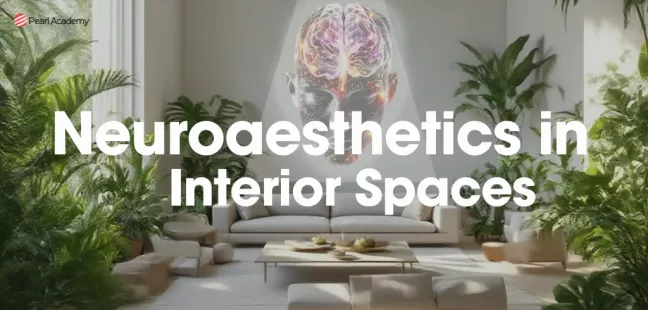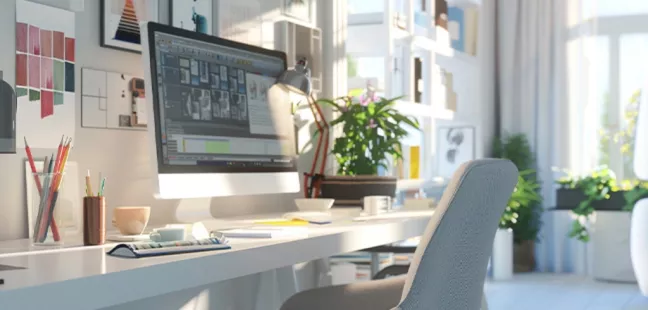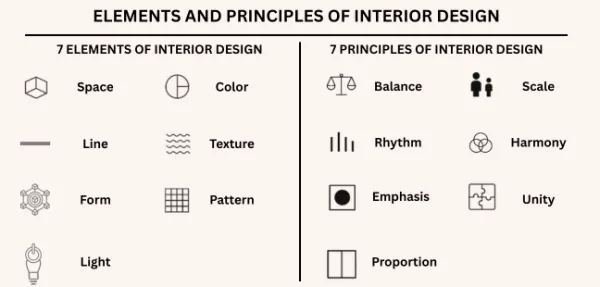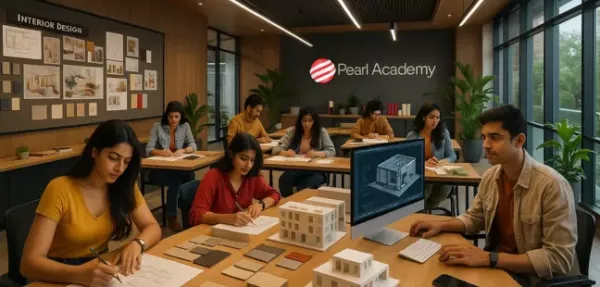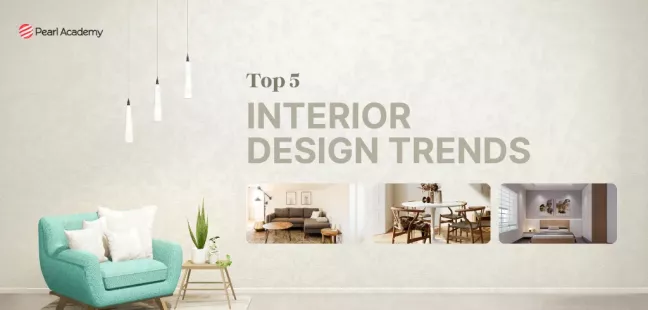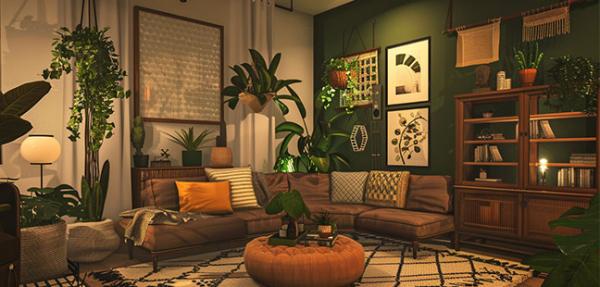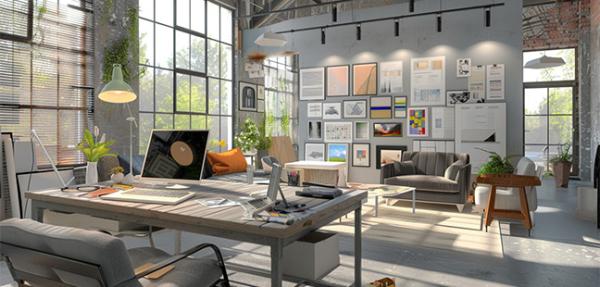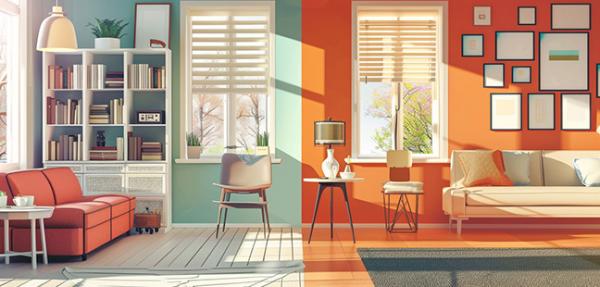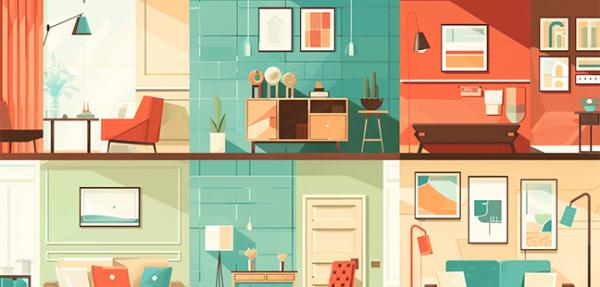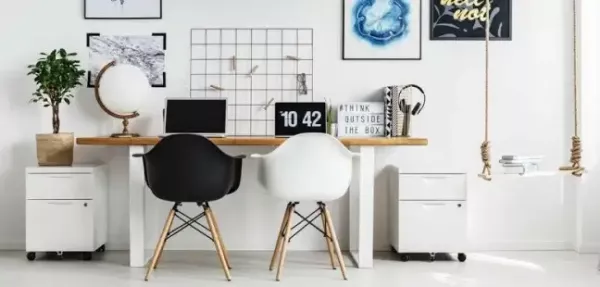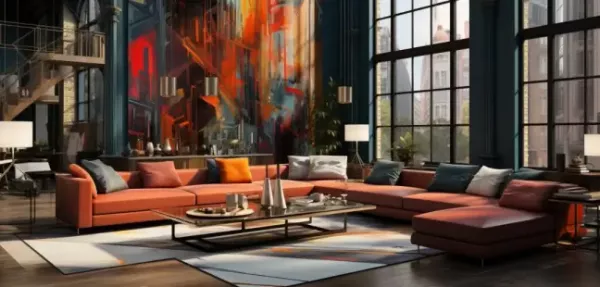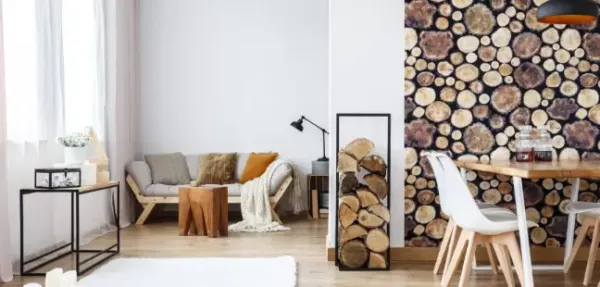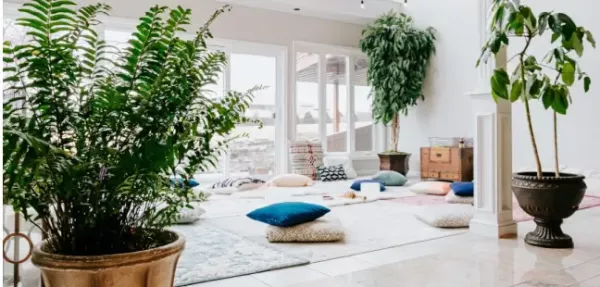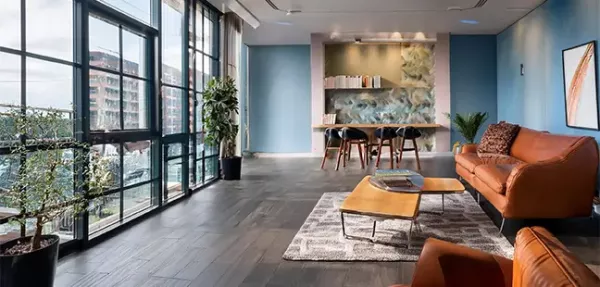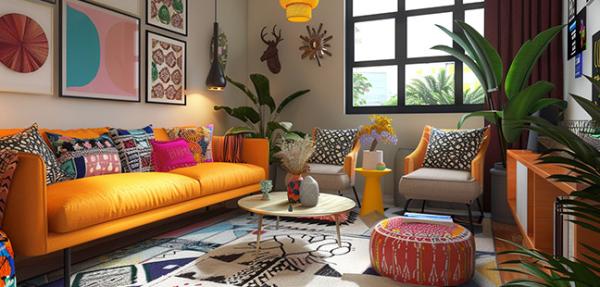Interior Design Courses After 12th: Eligibility, Career Scope, Top Colleges & More
- Editorial Team
- Published 30-Apr-2025

- Why Choose Interior Design as a Career After 12th?
- Is Interior Design a Good Career Choice After 12th?
- Skills Needed to Become a Successful Interior Designer
- Career Scope and Salary in Interior Design
- Types of Interior Design Courses Available After 12th
- Eligibility Criteria for Interior Design Courses
- Top Colleges for Interior Design in India
- How to Choose the Right Interior Design College
- Fees Structure and Scholarships
- Interior Design Course Curriculum – What Will You Learn?
- Career Opportunities After Interior Design Course
- Final Thoughts – Should You Pursue an Interior Design Course After 12th?
- Conclusion
- FAQs – Interior Design Courses After 12th
Choosing a career in interior design after 12th is both exciting and future-focused. With the rise of urban living, real estate development, and personalised workspaces, the demand for skilled interior designers is at an all-time high. Whether it’s designing elegant homes, luxury hotels, or innovative commercial spaces, interior designers shape the way we live and experience our surroundings.
Suppose you're passionate about design and looking for a creative, high-potential career. In that case, this comprehensive guide to Interior Design Courses After 12th will walk you through everything you need to know—from course options and eligibility to career prospects and top colleges in India.
Let’s dive in and explore how to kickstart your journey in interior design after 12th!
Become future-ready with our Interiors Programs
Know MoreWhy Choose Interior Design as a Career After 12th?
India's interior design industry is projected to grow at over 8% CAGR by 2027, creating massive employment opportunities.
Interior design isn't just about decorating rooms; it's about transforming spaces to make them functional, beautiful, and emotionally resonant. In today's world, where homes, offices, hotels, and retail spaces are increasingly personalized and experience-driven, interior designers are more in demand than ever before.
Here’s why choosing interior design as a career after 12th can be a rewarding and smart decision:
1. Explosive Growth in the Industry
The interior design industry of India is witnessing a massive boom in demand and career opportunities. With rising urbanisation, real estate development, hospitality expansion, and the surge of luxury and lifestyle projects, the demand for skilled interior designers is skyrocketing.
2. A perfect blend of Creativity and Practicality
Interior design isn’t just about decorating the room! It’s one of those rare careers where art meets science, making it intellectually and artistically fulfilling. You can unleash your creativity while taking care of technicalities and more.
3. Wide range of Career opportunities
A degree in interior design opens doors to a wide variety of roles beyond just being a residential designer. You can specialise in:
- Commercial Interior Design (offices, malls, restaurants)
- Hospitality and Luxury Spaces
- Set and Exhibition Design
- Lighting and Landscape Design
- Sustainable and Eco-Friendly Spaces
- Furniture and Product Design
You can work in design studios, architectural firms, real estate companies, or even start your own consultancy.
4. High Income Potential
As stated above, there are umpteen number of career opportunities, making interior designs high in demand. Experienced designers, especially those handling luxury projects or large-scale commercial designs, can command six-figure monthly incomes or work on high-value projects worth crores. You can also freelance as a designer as earn buckets of money.
5. Positively impacting people’s lives
Good interior design improves well-being, productivity, and happiness. You literally shape the spaces where people live, work, and celebrate.
Because of all these factors listed above, you can choose one of the most rewarding careers.
Is Interior Design a Good Career Choice After 12th?
Yes, absolutely. Interior design is one of the fastest-growing creative professions in India and globally. As urbanisation, real estate, and lifestyle aspirations continue to evolve, the need for functional yet visually appealing interiors is higher than ever.
Here’s why it’s a good choice:
- Diverse Career Options: From residential and commercial design to set design, event space planning, and furniture design, interior designers can explore multiple avenues.
- Entrepreneurial Freedom: Many interior designers go on to establish their own design firms or consult as freelancers.
- Creativity and Practicality: It allows you to blend artistic vision with practical space utilisation.
- Global Exposure: Designers often collaborate on international projects or pursue further studies abroad.
Whether you're from arts, commerce, or science, interior design is accessible and welcoming to all disciplines after the 12th. Click on our blog how to become an interior designer to know more.
Skills Needed to Become a Successful Interior Designer
To thrive in this field, you’ll need a mix of creative, technical, and interpersonal skills. While most of these are developed through professional training, having a few of these naturally is a big advantage:
- Creativity and Artistic Vision: To conceptualize unique designs and innovate on conventional layouts.
- Spatial Awareness: Understanding dimensions, scale, and how to optimize spaces effectively.
- Software Proficiency: Tools like AutoCAD, SketchUp, Photoshop, and 3D modeling software are essential.
- Problem-Solving: Balancing aesthetics with client needs, budgets, and structural limitations.
- Communication and Client Handling: To clearly present ideas and handle clients, vendors, and contractors.
- Time and Project Management: Handling multiple projects under deadlines and maintaining quality.
Most importantly, a passion for design and a willingness to constantly learn is what sets successful designers apart. For detailed information on essential skills, check out our blog on top important skills for interior designers.
Career Scope and Salary in Interior Design
Interior design offers lucrative and diverse career opportunities. You can work as:
- Interior Designer (Residential or Commercial)
- Space Planner
- Set Designer for film or television
- Lighting Designer
- Exhibition Designer
- Visual Merchandiser
- Furniture Designer
Salary Expectations:
- Freshers can earn between 3 to 6 LPA depending on location and skillset.
- With 3 to 5 years of experience, this rises to 6 to 10 LPA.
- Freelancers and experienced designers working on luxury or international projects can earn significantly more.
Moreover, with growing awareness around sustainable and smart interiors, green design and automation-integrated interiors are becoming high-demand niches.
In short, if you want a career that mixes imagination, innovation, and impact—with the potential to earn well and build your own brand—interior design after 12th is an excellent choice.
Explore Pearl Academy’s Interior Architecture Design course to get started.
Types of Interior Design Courses Available After 12th
Interior design is no longer just about decorating rooms—it's about reimagining spaces to improve how people live, work, and interact. If you're looking to pursue a career in this dynamic field right after high school, there are several exciting options available. From full-time interior design degree courses to flexible online and diploma programs, students from all academic streams—arts, commerce, or science—can find a path that suits them.
Let’s explore the best courses for interior design after 12th:
1. Bachelor of Interior Design (BID)
The Bachelor of Interior Design (BID) is a professional 4-year undergraduate program that offers deep knowledge of spatial design, materials, lighting, and structural systems. It focuses on creating functional interiors aligned with the needs of modern architecture and sustainable practices.
Who should choose this course?
- Students seeking an intensive, industry-focused degree.
- Those interested in both design creativity and construction-based applications.
2. B.Sc. in Interior Design
The Bachelor of Science in Interior Design leans more towards the scientific and technical aspects of the field. This 3-year course typically includes:
- Principles of design
- Ergonomics
- Lighting, acoustics, and environmental sustainability
- CAD software applications
Ideal for students who want a structured, research-oriented path into the design industry.
3. B.A. in Interior Architecture and Design
A Bachelor of Arts in Interior Architecture and Design blends aesthetics with architectural theory. It prepares students to design not just beautiful interiors, but intelligent spaces that respond to cultural, historical, and social contexts.
Students learn:
- Conceptual design and ideation
- Art history and material studies
- Interior landscaping and experiential design
This course is ideal for creative thinkers who want to tell stories through spatial design.
4. B.Des. in Interior Architecture Design
One of the best interior design degree courses in India, Pearl Academy’s B.Des. in Interior Architecture Design stands out for its industry-driven curriculum and global perspective. It’s a 4-year program designed for students ready to dive deep into space planning, design research, sustainability, and hands-on execution.
Why choose this course?
- Access to global faculty and international exposure
- Regular industry workshops, live projects, and mentoring
- Campuses in top cities like Delhi, Mumbai, Jaipur, and Kolkata
- Strong placement support in leading design firms
If you're looking to combine creativity with a practical, professional design education, this is a leading choice.
5. Diploma and Certificate Courses in Interior Design
For students who want to enter the profession faster or get a taste of the field before committing to a degree, a diploma in interior design after 12th is an excellent option. These programs typically last 6 months to 2 years and focus on hands-on training.
What you’ll learn:
- Interior styling, spatial planning
- Sketching and software like AutoCAD or SketchUp
- Residential and commercial design basics
They are job-oriented and available in most major cities across India.
6. Short-Term & Online Interior Design Courses
If flexibility is a priority, short-term and online interior design courses are perfect. Offered by various institutions and platforms, they allow students to learn at their own pace while gaining a solid foundation in design.
Options include:
- Online diploma programs
- Interior design course online free with certificate
- Online interior design course with certificate (paid options)
- Introductory programs ideal as interior design courses for beginners
These courses are great for hobbyists or those planning to transition into the field gradually.
Those interested short-term interior design courses can check out this 11-month certificate program for details.
Eligibility Criteria for Interior Design Courses
If you're considering a creative career in interior design, it's important to understand the eligibility requirements before enrolling in a course. Whether you're aiming for a full-fledged bachelor’s degree or a short-term certification, Let’s explore the eligibility for interior design after 12th in detail:
Minimum Qualifications Required
The basic eligibility for interior design after 12th is quite flexible, making it accessible to students from all backgrounds.
General criteria:
- The candidate must have completed 10+2 or equivalent from a recognised board.
- Minimum marks required vary by institute but generally range from 45% to 55% aggregate in Class 12.
- There is no specific subject requirement in most institutions, which means students from arts, commerce, or science backgrounds are all eligible.
Institutes like Pearl Academy, NIFT, and others also consider creative aptitude and communication skills as important selection factors beyond academics.
Required Entrance Exams (If Any)
While many design institutes admit students based on merit, some top-tier schools conduct their own entrance exams for interior design to assess a candidate’s creative thinking, design aptitude, and problem-solving skills.
Here are some commonly known entrance processes:
- Pearl Academy Entrance Exam: Includes a General Proficiency Test (GPT) and Design Aptitude Test (DAT), followed by a personal interview and portfolio review.
- NID Entrance Exam: This includes a Design Aptitude Test (Prelims and Mains).
- UCEED: The Undergraduate Common Entrance Examination for B.Des courses (not specific to interior design but relevant).
- CEED (for postgrad applicants), though not applicable after 12th, is useful for future plans.
However, many diploma and certificate courses in interior design do not require an entrance exam, and students can get direct admission based on their 12th-grade marks.
If you're exploring admission into fashion design programs, don’t miss our Ultimate Guide to Fashion Design Entrance Exams in India 2026, covering top exams, eligibility, and preparation strategies.
Top Streams – Can Students from Any Stream Apply?
A common question among students is: Who can apply for an interior design course? Do I need to be from the arts stream?
The answer is – anyone can apply. Interior design is open to:
- Science students with an interest in technical drawing, design, and spatial analysis.
- Commerce students with managerial thinking, client handling skills, and an interest in lifestyle trends.
- Arts students with natural creativity, visualisation skills, and aesthetic sense.
The field welcomes diversity in academic backgrounds, as interior design draws from various disciplines like psychology, architecture, environmental science, and business communication.
So, whether you’re from science, commerce, or arts, if you have the passion and creativity, you’re eligible to pursue your dream in design.
Top Colleges for Interior Design in India
Choosing the right college is a critical step when planning to pursue a career in interior design. India offers a variety of reputed government and private institutions that provide specialized programs catering to the creative and technical demands of this field. If you're looking for the best interior design college after 12th, this guide will help you navigate your options effectively.
1. Government and Private Institutions Offering Interior Design
Both government and private colleges in India offer high-quality interior design degree courses. While government institutions are known for their affordability, private institutions often provide better industry exposure, modern infrastructure, and international collaborations.
Top Government Institutions:
- Ahmedabad and other campuses
- Mumbai
- Trivandrum
Top Private Institutions:
- Pearl Academy – Delhi, Mumbai, Jaipur, and Bangalore
- Bangalore
- Pune
- Jaipur
These institutions offer undergraduate, diploma, and certificate programs tailored to design careers.
Top Colleges in Delhi, Mumbai, Bangalore, and Pune
If you're looking for top interior design colleges in India in major metro cities, here’s a quick snapshot:
| City | Top Colleges |
| Delhi | Pearl Academy and other reputed design institutes |
| Mumbai | Pearl Academy and other leading interior design colleges |
| Bangalore | Pearl Academy and other renowned design schools |
| Pune | Leading interior design colleges |
These cities offer robust creative ecosystems, great internships, and career opportunities. Explore our updated list of the Top Interior Design Colleges in India in 2026 for a deeper comparison across private and government institutions, cities, and entrance exams.
How to Choose the Right Interior Design College
When choosing the best interior design college after 12th, consider the following:
- Accreditation and Affiliation: Ensure the college is UGC/AICTE recognised.
- Curriculum and Specialisations: Look for updated, industry-aligned courses.
- Faculty and Infrastructure: Modern labs, studios, and experienced faculty matter.
- Placement Support: A strong network of recruiters and internship opportunities.
- Location and Exposure: Metro cities offer more design-related events, workshops, and client interaction.
Pearl Academy, for instance, offers a globally recognised B.Des in Interior Architecture Design program with a focus on hands-on learning and international exposure.
Fees Structure and Scholarships
Understanding the interior design course fees and financial support available is essential when planning your education. The cost of interior design education in India varies depending on the institute type, city, and program level.
1. Average Course Fees for Interior Design Programs
Program Type | Fee Range (Per Year) |
| B.Des/BID/B.Sc. in Interior Design | ₹1.5 – ₹4.5 Lakhs |
| Diploma Courses | ₹50,000 – ₹1.5 Lakhs |
| Online Short-Term Courses | Free – ₹50,000 |
Private colleges like Pearl Academy charge between ₹6–10 Lakhs for the full B.Des program, depending on the city and course structure. While this may be higher, the return on investment is excellent due to high industry integration and placement support.
2. Scholarships and Financial Aid Options
Many colleges offer scholarships for interior design students based on merit, income criteria, or performance in entrance exams. For example:
- Pearl Academy Scholarships: Merit-based scholarships for top-performing entrance exam takers and academic achievers. Explore your options more with Exploring Interior Design Course Duration, Fees, Scholarships and Faculty.
- Need-Based Financial Assistance: Offers fee waivers and aid to economically weaker sections.
- Private Scholarships: Offered by design councils, fashion foundations, and NGOs for talented students.
Always check the specific eligibility and documentation requirements on the institution's official website.
3. Education Loan Options for Interior Design Students
For students seeking affordable interior design colleges or facing financial constraints, education loans are a popular option. Most banks offer loans for professional undergraduate design courses with flexible repayment options and moratorium periods.
Key Loan Providers:
- SBI Scholar Loan
- HDFC Credila
- ICICI Education Loan
- Avanse Financial Services
You’ll typically need:
- Admission letter from a recognised institution
- Parent/guardian as co-applicant
- Collateral (if loan exceeds ₹7.5 Lakhs in some cases)
From identifying the top interior design colleges in India to understanding the interior design course fees and available scholarships, planning can make your creative journey smoother and more rewarding.
Interior Design Course Curriculum – What Will You Learn?
If you're curious about what you study in interior design, you're not alone. Interior design courses offer a well-rounded blend of creativity, technical skills, and real-world applications. The curriculum is designed to equip you with the knowledge and experience to transform empty spaces into functional, aesthetically pleasing environments.
Whether you pursue a full-time bachelor’s program or a diploma, here’s an overview of the interior design course subjects, practical components, and essential tools you’ll master.
1. Key Subjects and Modules
Interior design programs are multidisciplinary in nature, combining elements from architecture, psychology, engineering, and fine arts. Here are the core subjects typically covered:
- Design Fundamentals: Understand basic design principles, elements of art, and color theory.
- Space Planning and Ergonomics: Learn how to optimise interior layouts for comfort, efficiency, and usability.
- Interior Construction and Materials: Study various materials like wood, glass, metal, and fabrics, and how to use them in interiors.
- Building Services: Includes plumbing, lighting, HVAC, and electrical systems relevant to interior design.
- History of Interior Design and Architecture: Understand the evolution of design styles, cultural influences, and iconic design movements.
- Furniture Design: Learn to design and detail custom furniture pieces for functional and decorative use.
- Interior Landscaping and Set Design: Explore green design concepts and temporary spatial design for events and exhibitions.
- Sustainable and Green Design: Gain insights into eco-friendly materials, energy-efficient layouts, and climate-responsive design.
This wide-ranging curriculum ensures you’re not just a decorator, but a professional designer ready to take on modern design challenges.
2. Practical Training, Studio Work & Industry Exposure
Interior design education is not limited to textbooks. A major component of your learning comes through practical studio work and industry collaborations.
Hands-on Elements Include:
- Design Studios: Create mock layouts, mood boards, and models.
- Site Visits: Understand real-world applications on construction sites and design showrooms.
- Internships: Work with design firms or architectural studios to gain professional exposure.
- Capstone Projects: Develop a complete interior project from concept to execution.
Institutes like Pearl Academy place strong emphasis on industry-integrated learning, offering students live projects, client briefs, and mentorship from professionals. This kind of exposure prepares students to handle real-world challenges with confidence.
3. Software and Tools You Will Learn
In today's design world, being tech-savvy is non-negotiable. That’s why a large part of any interior design curriculum is dedicated to mastering digital tools.
Here are some of the key tools for interior designers you’ll typically learn:
- Autocad – for 2D drafting and layout planning
- SketchUp – for 3d modelling and space visualisation
- Photoshop and Illustrator – for graphic presentations and visual ideation
- 3ds Max or Rhino – for realistic rendering and animation
- Revit – for BIM (Building Information Modelling)
- V-Ray/Lumion – for photorealistic rendering
These software tools help you create detailed blueprints, realistic mockups, and client-ready presentations—essential skills for a modern interior designer.
With industry exposure, studio-based learning, and digital mastery, top programs like Pearl Academy’s B.Des. in Interior Architecture Design ensure you graduate with both vision and skills.
Career Opportunities After Interior Design Course
Interior design is more than just an academic pursuit—it’s a gateway to a wide range of dynamic and rewarding careers. Whether you dream of designing luxurious living rooms, creating eco-friendly office spaces, or running your own design firm, a career after interior design opens doors to diverse possibilities.
Let’s explore the various interior designer job roles, the top industries hiring designers, and the scope for freelancing and entrepreneurship.
1. Job Roles and Designations
After completing an interior design course—be it a degree, diploma, or certificate—you can explore a variety of specialized job roles in interior design that align with your interests and skills. To secure your dream role, it’s equally important to be well-prepared for interviews—explore our guide to Interior Design Interview Questions and Answers to learn how to make a lasting impression.
Here are some of the most common designations:
- Interior Designer: Plan, design, and furnish interiors of residential, commercial, or public spaces.
- Interior Architect: Focus on structural layout and spatial planning within interior environments.
- Space Planner: Optimise space usage for commercial buildings, malls, offices, or co-working spaces.
- Furniture Designer: Conceptualise and build functional and artistic furniture pieces.
- Lighting Designer: Specialises in the design and placement of lighting systems for mood and functionality.
- Exhibition Designer: Create layout plans for exhibitions, museums, and event installations.
- Set Designer: Design interiors for film, TV, theatre, and live performances.
- Visual Merchandiser: Curate engaging displays in retail spaces to attract and influence buyers.
These job roles are often project-based, collaborative, and involve working with architects, engineers, clients, and contractors.
2. Top Hiring Industries and Companies
The scope of a career after interior design is vast, with opportunities across multiple sectors:
Industries Hiring Interior Designers:
- Architecture and Design Firms
- Real Estate and Construction
- Retail Chains and Department Stores
- Hospitality (Hotels, Resorts, Restaurants)
- Event Management
- Media and Entertainment (TV, Film, Theatre)
- Furniture and Home Décor Brands
- Co-working Space Designers and Urban Planners
Top Employers in India and Abroad:
- Livspace
- Urban Ladder
- Godrej Interio
- Homelane
- Asian Paints (Sleek Kitchens)
- IKEA
- Morphogenesis
- Studio Lotus
- DWP Interics
- International firms like Gensler, HOK, and Perkins & Will
Graduates from reputed institutions like Pearl Academy often get placed in top design studios or go on to build successful independent practices.
3. Freelancing and Entrepreneurship in Interior Design
One of the most exciting aspects of this field is the freelance interior design opportunities it offers. Many designers prefer the flexibility, creativity, and independence that freelancing or starting their own business brings.
Freelancing as a Career:
- Work with individual clients on residential or commercial projects.
- Collaborate with architects, event planners, or decorators.
- Offer niche services like home makeovers, modular kitchens, or eco-friendly interiors.
- Build your portfolio and client base through social media platforms, freelancing websites, and word of mouth.
Entrepreneurial Paths:
- Launch your own interior design studio or consultancy.
- Start a furniture or décor brand.
- Create an online business offering virtual interior consultations and design kits.
- Offer workshops or online courses in design principles or styling.
With the rise of online platforms and digital tools, freelance designers today have a global market at their fingertips.
Final Thoughts – Should You Pursue an Interior Design Course After 12th?
If you’re someone who sees beauty in details, loves arranging spaces, or dreams of transforming environments, a career in interior design could be your true calling.
But before you make that decision, it helps to weigh the pros and cons and get a sense of how to begin.
1. Pros and Cons to Consider
Interior design is as rewarding as it is challenging.
Pros:
- High creative satisfaction
- Versatile career paths across industries
- Great scope for freelancing and entrepreneurship
- No subject restrictions—open to all streams
Cons:
- Competitive field—requires consistent skill upgrades
- Some roles can be physically demanding and deadline-driven
- Income may fluctuate initially in freelance work
Understanding these realities will help you enter the field with confidence and clarity.
2. How to Get Started – Tips for Beginners
Feeling inspired? Here’s how to take your first steps into the world of interior design:
- Start with Exploration – Enrol in a free or affordable online interior design course for beginners to understand the basics.
- Practice Your Skills – Use design apps, create sample mood boards, or sketch layouts to build your portfolio.
- Research Colleges – Shortlist the best interior design colleges after 12th, like Pearl Academy, for degree-level learning.
- Prepare for Exams – If needed, get ready for entrance tests like DAT or NID-UCEED.
- Stay Inspired – Follow designers on social media, read design blogs, and attend expos to stay updated on trends.
Your passion, combined with the right education, can set you on a fulfilling and successful design journey. Explore for in-depth information on how to become an interior designer.

Student Guidance Center: Our Counselors are Just a Click Away.
Conclusion
Pursuing an interior design course after 12th isn’t just about learning how to decorate—it’s about shaping how people live, feel, and experience the spaces around them. Whether you aim to work with top design firms or dream of launching your own studio, the opportunities are limitless.
FAQs – Interior Design Courses After 12th
Choosing the right course can be overwhelming, especially when you're just out of school. Here are answers to some frequently asked questions about interior design courses after 12th, to help you make an informed decision.
Q. Which Interior Design Course is Best After 12th?
A. The best interior design course after 12th depends on your goals and interests. For students looking for a professional and industry-ready degree, a B.Des in Interior Architecture Design from reputed institutes like Pearl Academy is highly recommended. It offers hands-on learning, global exposure, and strong placement support.
Other top choices include:
- B.Des. in Interior Architectural Design
- Bachelor of Interior Design (BID)
- B.Sc. in Interior Design
- Diploma in Interior Design after 12th for shorter, skill-based training
Each has its own strengths, but a degree course opens up wider career and salary opportunities.
Q. Can I Become an Interior Designer Without a Degree?
A. Yes, it is possible to become an interior designer without a formal degree, especially through:
- Diploma or certification programs
- Freelance work and internships
- Online interior design courses with certificates
However, a degree provides a structured curriculum, credibility, and better job prospects. Many firms prefer hiring candidates with a bachelor's degree for full-time roles.
Q. Is Maths Required for Interior Design?
A. No, advanced mathematics is not mandatory for pursuing interior design. Basic understanding of geometry and measurements is helpful, especially for drafting, layouts, and spatial calculations. If you're from a non-maths background, you can still thrive in this field, especially with strong creative and visual skills.
Q. How Long is an Interior Design Course After 12th?
A. The interior design course duration varies depending on the type of course:
- Bachelor’s Degree (B.Des, BID, B.Sc.) – 3 to 4 years
- Diploma – 1 to 2 years
- Certificate Courses – 3 to 6 months
- Online Courses – Self-paced (from 4 weeks to a few months)
Choose based on your career goals, time availability, and learning preference.
Q. What is the Salary of an Interior Designer in India?
A. Interior designer salaries vary based on experience, location, and skill set. On average:
- Freshers: ₹3–6 LPA
- Mid-Level: ₹6–10 LPA
- Experienced Designers: ₹12–20 LPA or more
- Freelancers: ₹25,000 to ₹3 Lakhs per project
Top institutions like Pearl Academy offer placement support that can significantly boost your starting salary.
Also Read:
Tags
- #Interiors
Pearl Admission Enquiry
Subscribe to Pearl Blogs
By clicking the "Subscribe" button, I agree and accept the privacy policy of Pearl Academy.









